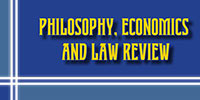Alex HALAPSIS
D.Sc. in Philosophy, Professor, Academician of the Academy of Political Sciences of Ukraine (Dnipropetrovsk State University of Internal Affairs), Ukraine
ORCID iD: https://orcid.org/0000-0002-9498-5829
Researcher ID: E-6947-2015
prof.halapsis@gmail.com
Alexandros HALAPSIS
DFA, DMA, Professor (Maria Callas Cultural Center – Athenaeum Conservatory Athens), Greece
halapsis@ukr.net
UDC 1:94(37)+292
DOI 10.31733/2786-491X-2021-5-17
Keywords: Romulus, Tarquinius Superbus, republic, monarchy, Roman community, king, ancient Rome
Abstract. The exile of King Tarquinius Superbus was surprisingly quick and painless. Although the King was the high priest, the other priests did not seek to challenge his exile, only insisting on the need to save his life. Army commanders did not consider it a treason to move to the side of the rebellious City. The senators, whose mission as elders was to uphold the traditions and way of life of the community, not only did not hinder the revolution, but actually led it. All this indicates that although the exile of the king was an unprecedented event in the history of early Rome, it did not destroy the very model of the universe.
The Republic in Rome was established relatively easy precisely because the idea of a common cause, which meant a collective interest in the prosperity of this new world, was laid down here from the very beginning. The chosen (of the most worthy) kings were to effectively manage the «Roman business», and as long as they coped with it, as long as they ensured the parity of interests of different groups of society, its stable territorial growth and had the support of the gods, no problems arose. Tarquinius Superbus violated an unspoken «social contract» for which he was removed. But this removal did not lead to the cancellation of the contract itself (concluded between humans and gods), and only to its modification.
Getting rid of royal power, which marked a break with the last elements of the traditional world, put on the agenda the question of the need to develop a model that could legitimize the ideal of a common cause. This model is known as «Roman Republic». In its political form, it is opposed to the royal model, but in a worldview, it is a logical development of a Roman idea that has never been associated with either the conception of the divine origin of power or the concept of absolute (and hereditary) monarchy. The continuity between the royal and republican periods of Roman history was expressed in the unity of the original patterns that determine the nature of the Roman idea. Roman society was not formed «for the king» or even «for the gods». The kings and gods served as a means of cementing the community, giving it a sacred nature; the latter, which expressed the concept of the «universal priesthood» as a collective sacred principle, was also the basis of political doctrine. The question of specific forms of government (whether the community will be headed by a lifetime elected king, or magistrates who are elected for a limited time) is secondary.
The idea of a collective interest in the success of the common cause was inherent in the Roman project from the very beginning, just a new model allowed it (the project) to be implemented more effectively, facilitating both the coming to power of the most capable members of the community and ensuring the control of the people over the activities of the government.
References
- Beard, M. (2015). SPQR: A History of Ancient Rome. New York: Liveright. Kindle Edition.
- Bradley, G. (2020). Early Rome to 290 BC: The Beginnings of the City and the Rise of the Republic. Edinburgh: Edinburgh University Press.
- Carandini, A. (2011). Rome: Day One (S. Sartarelli, Trans.). Princeton: Princeton University Press.
- Cornell, T. (1995). The Beginnings of Rome: Italy and Rome from the Bronze Age to the Punic Wars (c. 1000—264 BC). London: Routledge.
- Dionysius of Halicarnassus. (1960). Roman Antiquities (E. Cary, Trans. 1 (1-2)). Cambridge, MA: Harvard University Press.
- Forsythe, G. (2005). Critical History of Early Rome: From Prehistory to the First Punic War. University of California Press.
- Gibbon, E. (2008). The decline and fall of the Roman Empire (5). TERRA – Book Club. (in Russian).
- Halapsis, A. (2014). Iovem Imperium, or Sacred Aspects of Roman «Globalization». Scientific cognition: methodology and technology, 33(2), 173-178.
- Kofanov, L. (2001). The nature of the royal power in Rome VIII–VI centuries. BC. Antiquity and medieval studies, 3. 14-24. (in Russian).
- Koptev, A. (2009) The Story of the Virtuous Lucretia: Between Literature, Law and Ritual. Antique world and archeology, 13, 176-202. (in Russian).
- (1967). History of Rome (B. O. Foster, Trans. 1 (1-2)). Cambridge, MA: Harvard University Press.
- Momigliano, A. (1990). The Classical Foundations of Modern Historiography. Berkeley: University of California Press.
- Montesquieu, Sh.L. (2002). Persian letters. Reflections on the causes of the greatness and fall of the Romans. KANON–press–Ts. (in Russian).
- Mommsen, T. (1997). History of Rome. 1. Rostov–na–Donu: Fenix. (in Russian).
- (1967). Lives (B. Perrin, Trans. 1). Cambridge, MA: Harvard University Press.
- Rodríguez–Mayorgas, A. (2010). Romulus, Aeneas and the Cultural Memory of the Roman Republic. Athenaeum, 98(1), 89-109.
- Smorchkov, A. (2012). Religion and Power in the Roman Republic: Magistrates, Priests, Temples. (in Russian).
- Wetzler, P. (1998). Hirohito and War: Imperial Tradition and Military Decision Making in Prewar Japan. University of Hawaii Press.
- Wiseman, T. (1995). Remus: A Roman Myth. Cambridge: Cambridge University Press.
